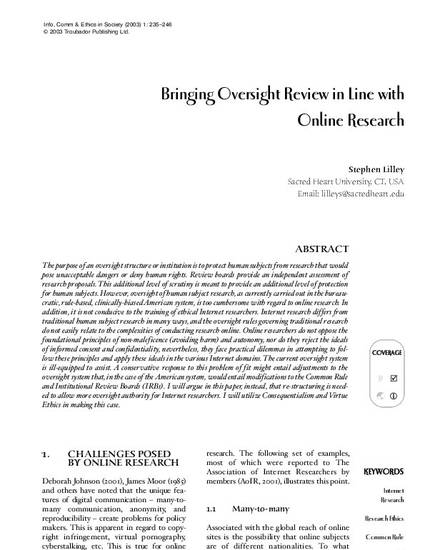
The purpose of an oversight structure or institution is to protect human subjects from research that would pose unacceptable dangers or deny human rights. Review boards provide an independent assessment of research proposals. This additional level of scrutiny is meant to provide an additional level of protection for human subjects. However, oversight of human subject research, as currently carried out in the bureaucratic, rule-based, clinically-biased American system, is too cumbersome with regard to online research. In addition, it is not conducive to the training of ethical Internet researchers. Internet research differs from traditional human subject research in many ways, and the oversight rules governing traditional research do not easily relate to the complexities of conducting research online. Online researchers do not oppose the foundational principles of non-maleficence (avoiding harm) and autonomy, nor do they reject the ideals of informed consent and confidentiality, nevertheless, they face practical dilemmas in attempting to follow these principles and apply these ideals in the various Internet domains. The current oversight system is ill-equipped to assist. A conservative response to this problem of fit might entail adjustments to the oversight system that, in the case of the American system, would entail modifications to the Common Rule and Institutional Review Boards (IRBs). I will argue in this paper, instead, that re-structuring is needed to allow more oversight authority for Internet researchers. I will utilize Consequentialism and Virtue Ethics in making this case.

doi: 10.1108/14779960380000238#sthash.22Z4E6LK.dpuf